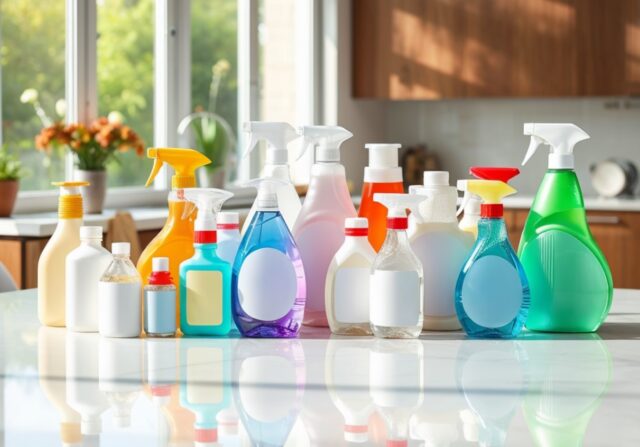
Maintaining a clean home can sometimes feel like a never-ending task. You scrub, wipe, and polish, but it’s essential to use the right cleaner for each surface. Let’s break down the best cleaning practices for wood, tile, and other common household surfaces, so you can make your cleaning routine more effective and less stressful.
Wood Surfaces: Care and Caution
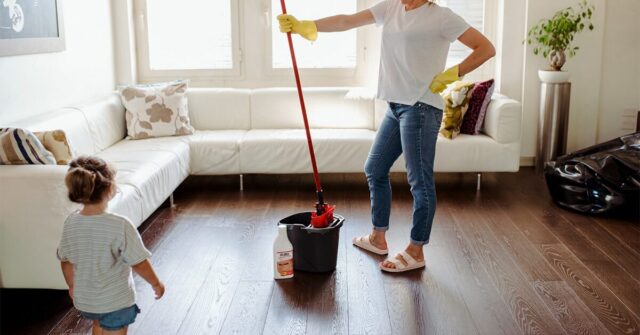
Wood is a natural material that adds warmth and elegance to your home, but it’s also prone to damage if not cleaned properly. The last thing you want is to ruin your beautiful hardwood floors or furniture with the wrong cleaner.
What Should You Use?
For regular cleaning, a mild all-purpose cleaner like allzweckreiniger is often a safe bet. It’s gentle enough not to strip the wood of its natural oils, yet effective at removing dirt and grime. Simply dilute it with water, apply it with a soft cloth, and wipe down your wood surfaces. For more delicate or antique wood pieces, stick to a cleaner specifically formulated for wood, or even a homemade solution of water and a splash of vinegar.
Pro Tip: Always dry the wood surface thoroughly after cleaning. Excess moisture can cause the wood to warp or develop unsightly water spots.
What Should You Avoid?
Steer clear of harsh chemicals like bleach or ammonia-based cleaners. These can damage the wood’s finish and cause discoloration. Also, avoid using too much water. Wood is porous, and excessive moisture can lead to swelling or warping.
Tile Surfaces: Shine and Sanitize
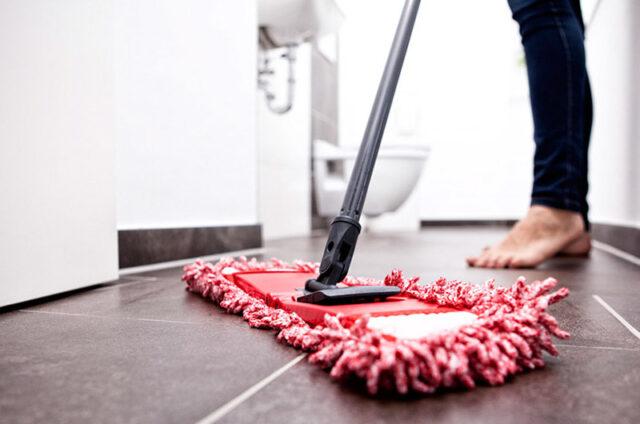
Tiles are a popular choice for kitchens, bathrooms, and other high-traffic areas because they’re durable and easy to clean. However, not all tile cleaners are created equal, and using the wrong one can leave you with dull, streaky surfaces.
What Should You Use?
A versatile cleaner like allzweckreiniger works well on most types of tile, whether ceramic, porcelain, or stone. It effectively cuts through grease and grime without leaving residue, making it perfect for kitchen backsplashes and bathroom walls alike. For floors, mop with a diluted solution of allzweckreiniger, and be sure to rinse with clean water to prevent any film from forming.
For more stubborn stains, a mixture of baking soda and water can work wonders. Apply the paste to the stained area, let it sit for a few minutes, and then scrub gently with a brush.
Pro Tip: When cleaning grout, use a toothbrush or a small scrub brush with stiff bristles. Regular maintenance can prevent the build-up of mold and mildew, keeping your grout lines bright and clean.
What Should You Avoid?
Acidic cleaners like vinegar or lemon juice can etch and dull the surface of natural stone tiles, so it’s best to avoid them. Also, be cautious with abrasive scrubs or steel wool, as they can scratch the surface of tiles, especially glazed ones.
Glass Surfaces: Streak-Free and Sparkling
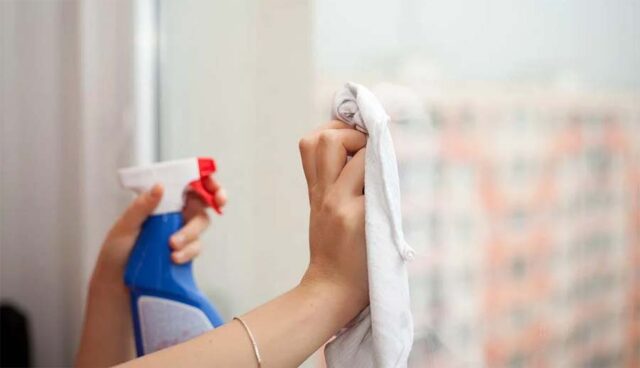
Glass surfaces, whether windows, mirrors, or tabletops, require a special touch to avoid streaks and smudges. A cloudy or streaky finish can ruin the look of an otherwise spotless room.
What Should You Use?
A simple solution of water and a few drops of allzweckreiniger can be very effective for cleaning glass. Spray the mixture onto the surface and wipe it off with a microfiber cloth. Microfiber is great because it doesn’t leave lint behind and helps achieve that streak-free shine.
For stubborn spots, like dried-on toothpaste on a mirror, a bit of rubbing alcohol on a cloth can cut through the grime without leaving streaks.
Pro Tip: When cleaning windows, wipe in a vertical direction on one side of the glass and a horizontal direction on the other. This way, if there are any streaks, you’ll know which side they’re on.
What Should You Avoid?
Avoid using newspapers or paper towels, as they can leave lint or ink stains. Also, stay away from harsh cleaners containing ammonia, which can damage the protective coatings on certain types of glass.
Stainless Steel Surfaces: Gleaming and Fingerprint-Free
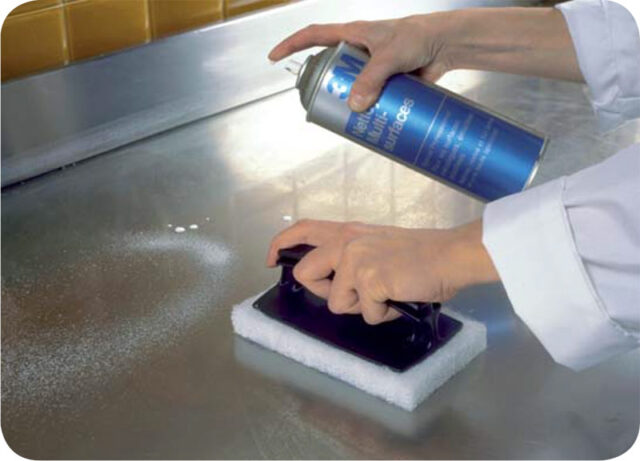
Stainless steel is a common choice for kitchen appliances, but keeping it smudge-free can be a challenge. Fingerprints, water spots, and streaks can make your stainless steel look anything but clean.
What Should You Use?
Allzweckreiniger is excellent for cleaning stainless steel. Spray a diluted solution onto a soft cloth and wipe the surface in the direction of the grain. Buffing it with a dry microfiber cloth afterward will help to restore its shine. For an extra polish, a tiny bit of olive oil on a cloth can make your stainless steel appliances gleam like new.
Pro Tip: Regular cleaning prevents the build-up of dirt and oil, making it easier to maintain the shine of your stainless steel appliances.
What Should You Avoid?
Avoid using abrasive cleaners or scrubbing pads, as these can scratch the surface. Also, steer clear of bleach-based cleaners, which can cause staining or damage to the stainless steel finish.
Granite and Marble Surfaces: Keeping Stone Pristine
Granite and marble surfaces are luxurious and durable, but they require specific care to maintain their appearance. Using the wrong cleaner can lead to etching or dulling of the stone’s natural shine.
What Should You Use?
For everyday cleaning, a pH-neutral cleaner like allzweckreiniger is a good choice. It won’t damage the stone’s sealant and will help keep your countertops looking pristine. A mix of water and a few drops of mild dish soap can also be effective. Be sure to wipe the surface dry after cleaning to avoid water spots.
Pro Tip: Seal your granite or marble countertops every 6 to 12 months to protect them from stains and spills. This is especially important in the kitchen where countertops are exposed to acidic substances like lemon juice or vinegar.
What Should You Avoid?
Avoid acidic or abrasive cleaners, as they can cause etching on the stone’s surface. Also, never use vinegar, lemon juice, or bleach on granite or marble, as these substances can permanently damage the stone.
Laminate Surfaces: Smooth and Resistant
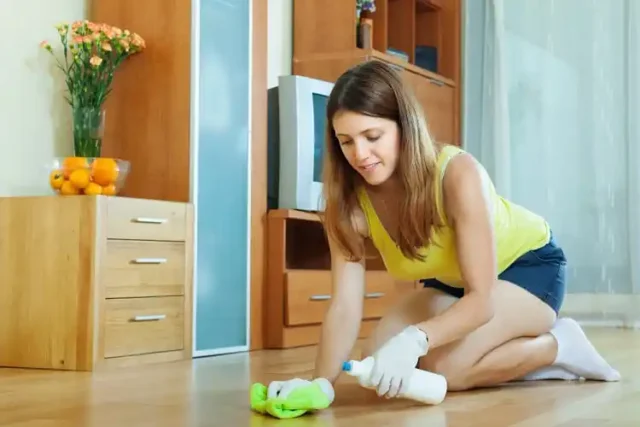
Laminate surfaces are often found in kitchens and bathrooms, where they provide a durable and easy-to-clean finish. However, they can be prone to scratches and staining if not properly cared for.
What Should You Use?
A diluted solution of allzweckreiniger is perfect for cleaning laminate surfaces. It’s gentle yet effective, leaving your countertops and cabinets clean without streaks. Wipe down with a soft cloth and make sure to dry the surface to prevent water damage.
For tougher stains, a paste of baking soda and water applied with a soft cloth can help lift the stain without damaging the laminate.
Pro Tip: Always use a cutting board on laminate countertops. Although laminate is durable, it can scratch easily, and those scratches can collect dirt and grime.
What Should You Avoid?
Avoid using steel wool or abrasive cleaners on laminate surfaces, as these can scratch or dull the finish. Also, be cautious with water; laminate surfaces can swell or warp if exposed to excessive moisture.
Conclusion
Knowing the right cleaner for each surface in your home not only makes cleaning easier but also ensures that your home stays beautiful and well-maintained. With these tips in hand, you can tackle your cleaning routine with confidence, keeping every surface in your home looking its best.









